





What to Do When I Feel Like Throwing Things – Free Printable Social Story
FREE
₹160
100% off
0 (0 ratings)
Grade Levels
Pre-K - Grade 3 (Ages 4-9)
Content Overview
Format: Free Printable PDF, Total Pages: 11, Features: 16 real-life segments, engaging illustrations, 6 interactive activities
Categories
Pages from the Resource
This free printable social story helps children learn self-control and safe ways to handle frustration instead of throwing things. With real-life scenarios and interactive activities, kids develop emotional regulation and problem-solving skills. Perfect for kids with autism, ADHD, and impulse control difficulties.

Page 1

Page 2
What Users Say
0
0 ratings
5
0+
4
0+
3
0+
2
0+
1
0+
5 Stars
Product is Good to use.
9 months ago
Varsha Parent
Similar Products
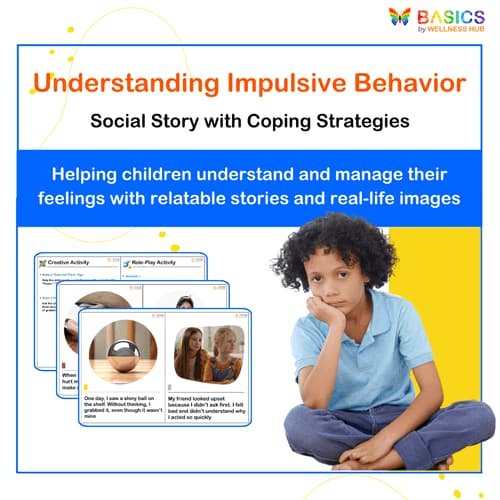
Understanding Impulsive Behavior: Social Story with Coping Strategies
₹ 80.00
₹ 160.00
50% off
4.9 (42 ratings)
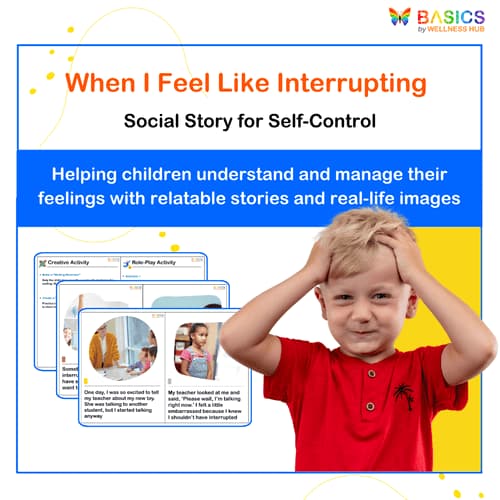
When I Feel Like Interrupting – Social Story for Self-Control
₹ 80.00
₹ 160.00
50% off
4.8 (60 ratings)
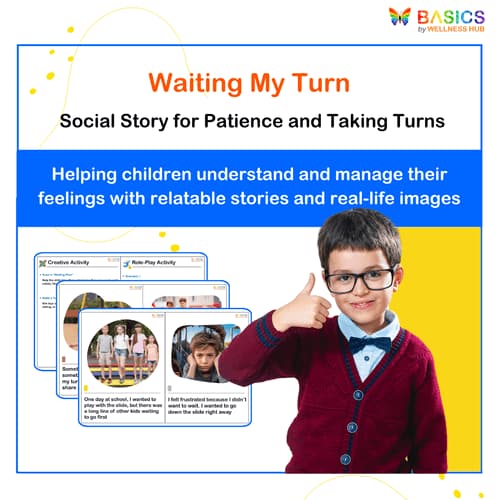
Waiting My Turn – Social Story for Patience and Taking Turns
₹ 80.00
₹ 160.00
50% off
4.7 (56 ratings)
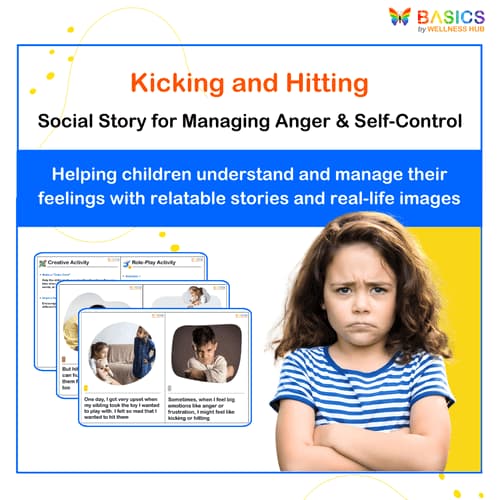
Kicking and Hitting – Social Story for Managing Anger & Self-Control
₹ 80.00
₹ 160.00
50% off
4.6 (52 ratings)
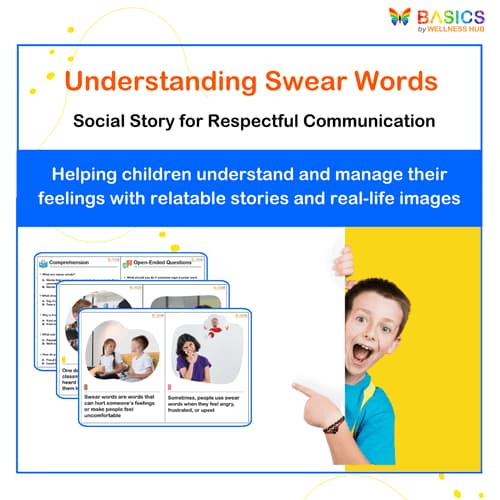
Understanding Swear Words – Social Story for Respectful Communication
₹ 80.00
₹ 160.00
50% off
4.9 (48 ratings)
About the Product
Throwing things out of frustration is a common behavior in young children, especially when they feel overwhelmed, angry, or unable to express their emotions verbally. While this reaction is natural for kids still developing self-regulation skills, it can be disruptive in classrooms, homes, and social settings.
This free printable social story is designed to help children understand why they feel like throwing things and learn safe and appropriate ways to handle those feelings. By using relatable, real-life scenarios, this story provides a structured and engaging way to teach kids self-control, emotional awareness, and problem-solving skills.
It is especially useful for:
✔ Preschoolers and early learners developing self-regulation skills.
✔ Children with autism, ADHD, and other behavioral challenges who may struggle with impulse control.
✔ Parents, teachers, and therapists looking for a structured, visual tool to teach alternative behaviors.
This interactive social story empowers children with positive coping strategies, reducing frustration-related outbursts while promoting emotional intelligence and problem-solving.
Product Details
- Format: Free Printable PDF
- Total Pages: 11
- Segments: 16 real-life scenarios teaching self-control and emotional regulation.
- Features:
✔ Engaging illustrations for visual reinforcement.
✔ First-person storytelling to help children relate to the situation.
✔ 6 interactive activities for practicing self-regulation and impulse control.
✔ Simple, child-friendly language for easy comprehension.
✔ Scenarios include everyday moments when a child may feel frustrated and want to throw objects, along with positive alternatives to manage these emotions.
This free resource is ideal for parents, educators, and therapists to use in classroom, home, and therapy settings.
Educational Benefits
-
This free social story is not just about stopping negative behaviors—it actively teaches children why they feel like throwing things and what they can do instead.
1. Teaches Self-Regulation & Emotional Control
Children learn why they feel the urge to throw things, how to recognize their emotions before reacting, and how to pause and make better choices.
2. Encourages Problem-Solving & Safe Alternatives
Instead of throwing objects, children are encouraged to:
✔ Take deep breaths.
✔ Walk away from the situation.
✔ Use words to express frustration.
✔ Squeeze a stress ball or use a sensory tool.3. Supports Special Needs & Social-Emotional Learning (SEL)
This story is particularly beneficial for children with autism, ADHD, and sensory processing difficulties who may struggle with expressing emotions in appropriate ways. The structured, repetitive format makes it easier for them to process and apply the lessons.
4. Reinforces Learning with Interactive Activities
Beyond just reading, children can practice self-regulation techniques through six hands-on activities that encourage discussion, role-playing, and personal reflection.
Instructions for Use
This social story is versatile and can be used in various settings to help children develop positive self-regulation skills.
1. Read & Discuss the Story
- Read the story aloud with your child or student.
- Pause at each scenario and ask questions to encourage reflection:
"Have you ever felt this way?"
"What else could you do instead of throwing something?"
"How do you think others feel when you throw things?"
2. Use Real-Life Examples
- When a child feels frustrated, remind them of the strategies from the story.
- Provide visual reminders with printable cue cards or social scripts.
- Help children identify emotions before they escalate into throwing behaviors.
3. Engage in Interactive Activities
- Use the six included activities to reinforce key concepts:
✔ Vocabulary practice – Identifying feelings and triggers.
✔ Spelling activity – Learning emotional regulation words.
✔ Comprehension questions – Testing understanding of the story.
✔ Open-ended discussion – Encouraging personal reflections.
✔ Creative activity – Drawing or role-playing positive ways to handle frustration.
✔ Role-Play Activity – Practicing self-control techniques in real-life scenarios.
4. Reinforce Positive Behavior Daily
- Model appropriate emotional regulation in everyday situations.
- Praise and reward when your child successfully manages their frustration:
"Great job using your words instead of throwing something!"
"I love how you took deep breaths when you were upset!
Activities Using the Resource
To help children internalize self-regulation strategies, these interactive activities reinforce the key lessons from the social story.
1. "What Can I Do Instead?" Role-Playing Activity
Objective: Teach children to recognize frustration and practice positive alternatives to throwing things.
✔ Materials: Small props (soft toys, stress balls, fidget tools).
✔ How to Play:
- Set up a scenario where a child might feel frustrated and want to throw something (e.g., they lose a game, can’t find a toy, or are told “no”).
- Ask: "What could we do instead of throwing?"
- Help the child act out alternatives such as:
✔ Taking deep breaths.
✔ Using words to express feelings.
✔ Squeezing a stress ball.
✔ Asking for help. - Reinforce positive responses with praise:
"Great job using your words instead of throwing!"
2. "Calm Down Countdown" Game
Objective: Teach children to pause before reacting when they feel upset.
✔ Materials: A timer or visual countdown (e.g., fingers, number flashcards).
✔ How to Play:
- When a child starts feeling frustrated, have them pause and count down from 5.
- Each number represents a calming action:
5 – Take a deep breath.
4 – Shake out the tension in their hands.
3 – Stretch their arms.
2 – Say, "I can handle this."
1 – Make a good choice (walk away, talk, or squeeze a fidget toy). - This helps train impulse control and makes calming down a structured, predictable process.
3. "Red Light, Green Light" Impulse Control Game
Objective: Improve self-regulation and listening skills.
✔ Materials: Open space or small area for movement.
✔ How to Play:
- Green Light: The child moves forward.
- Red Light: The child freezes immediately—just like they should stop before throwing something!
- After stopping, discuss:
"What else can we do when we feel like throwing things?"
4. "My Safe Hands and Safe Choices" Chart
Objective: Help children visualize what to do instead of throwing things.
✔ Materials: Printable chart, markers, or stickers.
✔ How to Play:
- Create a chart with two columns: "Safe Choices" and "Not Safe Choices."
- Have the child place pictures, drawings, or stickers in each category.
- Reinforce the importance of making safe choices when frustrated.
5. "What Would You Do?" Discussion Cards
Objective: Teach children to problem-solve emotions before acting on impulse.
✔ Materials: Printable scenario cards or written prompts.
✔ How to Play:
- Read a real-life situation aloud (e.g., "You can’t find your favorite toy. What do you do?").
- Have the child think and respond with positive choices.
- Reinforce safe responses and talk about why throwing is not okay.
FAQs
Q1. Who is this social story designed for?
This free resource is for children ages 4-9 who need help managing frustration and learning positive alternatives to throwing things. It is especially helpful for:
✔ Kids struggling with impulse control.
✔ Children with autism, ADHD, and sensory processing difficulties.
✔ Parents, teachers, and therapists looking for structured, visual tools to teach self-regulation.
Q2. How do I use this social story effectively?
✔ Read the story regularly – Repetition helps kids internalize the lesson.
✔ Ask open-ended questions – "How else can we calm down?"
✔ Use the interactive activities – Reinforce learning through role-playing and problem-solving games.
✔ Praise good behavior – Reinforce self-control with positive reinforcement.
Q3. Can this be used in therapy sessions?
Yes! This free printable social story is a fantastic tool for speech therapists, behavioral therapists, and special educators. It can be used in one-on-one therapy, social skills groups, or classroom settings to teach healthy emotional regulation skills.
Q4. Does this resource include interactive activities?
Yes! In addition to the 16 real-life segments, this story includes 6 structured activities that help children process emotions and practice impulse control in a fun and engaging way.
Q5. Is this printable, or does it come as a physical book?
This is a free printable PDF that you can download instantly. It is not a physical book, but you can print it out or use it digitally on a tablet.
Q6. Can this be used in a classroom setting?
Absolutely! Teachers can:
✔ Use it for social-emotional learning (SEL) lessons.
✔ Read it aloud to the class to start discussions.
✔ Incorporate activities to practice self-regulation skills in group settings.
Q7. How can I reinforce these lessons at home?
✔ Model self-control – Show your child how you handle frustration calmly.
✔ Praise positive choices – Celebrate when they choose safe behaviors instead of throwing things.
✔ Use reminders – Visual cue cards, charts, and timers can help reinforce impulse control.
Usage Rights and Restrictions
To ensure ethical use of this free resource, please follow these guidelines:
Allowed:
✅ Personal use by parents, educators, and therapists.
✅ Printing multiple copies for your classroom or therapy sessions.
✅ Using digitally on a tablet or computer.
Not Allowed:
❌ Sharing, distributing, or reselling this resource in any format.
❌ Uploading the PDF to online platforms or third-party websites.
❌ Modifying the content for commercial purposes.
For bulk licensing or school-wide access, please contact us for special permissions.
Conclusion
"What to Do When I Feel Like Throwing Things – Free Social Story" is an engaging and structured way to help children:
✔ Understand why they feel like throwing things
✔ Learn safe and appropriate ways to express frustration
✔ Develop impulse control and emotional awareness
By using relatable scenarios, engaging illustrations, and structured activities, this free printable resource ensures that children develop positive coping skills and improved behavior.
Instant download – Start using it today!
Perfect for home, school, and therapy sessions.



